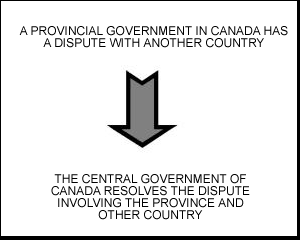 Why was the European Union involved in a dispute between Spain and Canada?
Why was the European Union involved in a dispute between Spain and Canada?
On March 9th, 1995, the Canadian Coast Guard seized the Spanish fishing trawler Estai off the coast of Newfoundland. The Canadian government accused Spanish ships of overfishing turbot off the Grand Banks. It seized the Estai and cut off the nets of other fishing trawlers from Spain and Portugal. NAFO was not directly involved in the dispute.
So why did Canada negotiate a settlement with the EU instead of with Spain and Portugal?
To answer that question, we must compare Canada and the EU.
Dare We Compare? Part 1
To understand why Canada negotiated with the EU rather than with Spain, we need to understand the relationship between the central and regional governments in the European Union.
The relationship between the regional and central governments in both Canada and the EU is extremely similar. See Lesson 3-Activity 2 in the politics section.
IN CANADA
In Canada, there is a central federal government as well as regional provincial and territorial governments. For example, Ontario has a provincial government, while the North-West Territories has a territorial government. If one of these regional governments becomes involved in any kind of dispute with another country, such as the United States or Spain, then the central government steps in to resolve the conflict.
Okay, so the national government in Canada takes care of any disputes with the government of other countries.
What does this have to do with the EU?
Click here to find out!